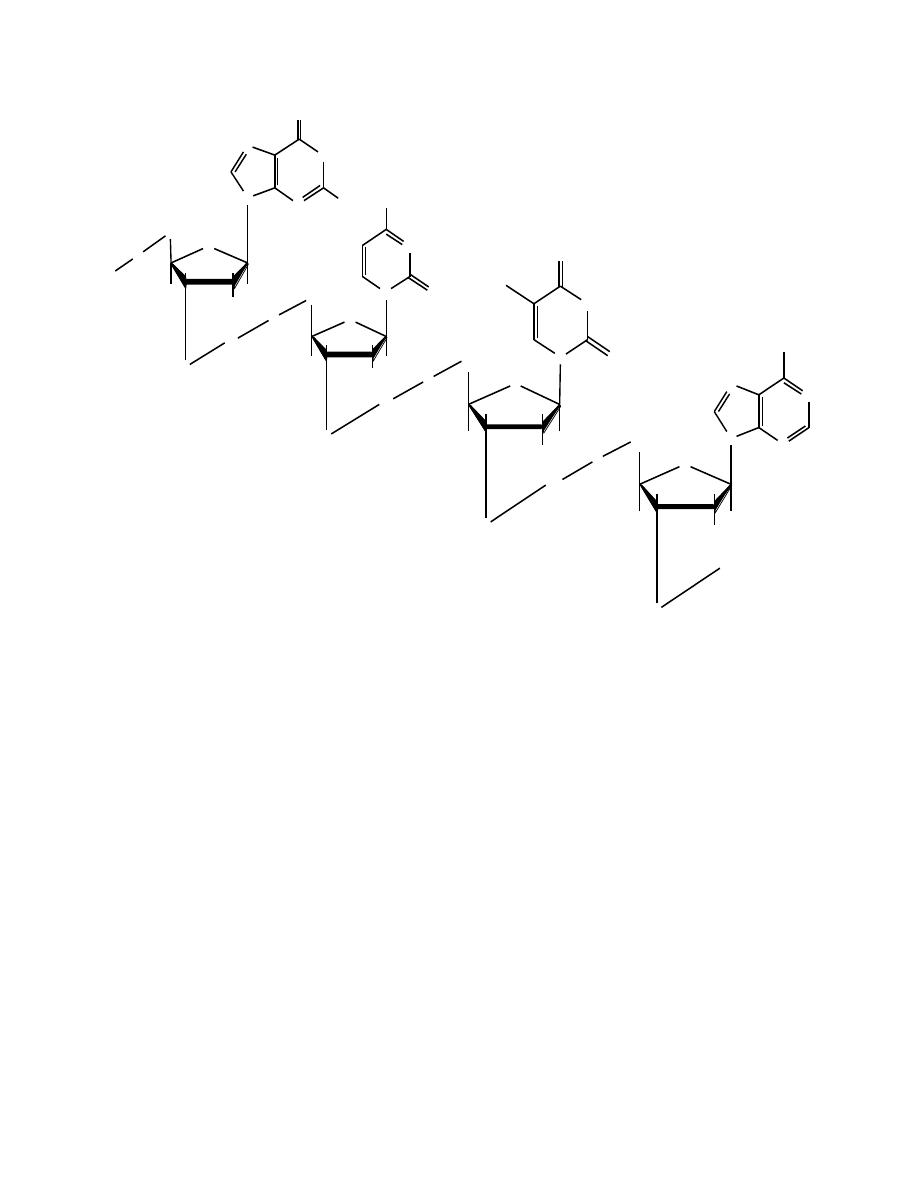
1
Nucleic acids
Five major heterocyclic bares: the most major heterocyclic bases of nucleic acids
are the purines adenine and guanine and the pyrimidines cytosine, thymine, and uracil.
All nucleic acids contain adenine, guanine, and cytosine. DNA (but not RNAs) also
contains thymine, while RNAs (but not DNA) also contain uracil.
The nucleic acids DNA and RNA are polymeric molecules. DNA contain of 4 bases
A, G, C, and T. DNA is organized into two strands by the pairing of bases A to T and G
to C on complementary strands. These strands form a double helix around a central axis.
One function of DNA is to provide a template for replication and thus maintenance
of the genotype. Another is to provide a template for transcription of the approximately
100.000 genes that encode a variety of RNA molecules.
In contrast to DNA, RNA exists in several different single strandes structures, most
of which are involved in protein synthesis.
The major forms of RNA include:
Messenger RNA (mRNA)
Ribosomal RNA (rRNA)
Transfer RNA (tRNA)
Each differs from others by size, function, and general stability.

2
Rule of nucleic acids in protein synthesis:
DNA provides a template for replication and transcription:
The genetic information stored in the nucleotide sequence of DNA serves two
purpose synthesis of all protein molecules of the cell and organism and it provides the
information inherited by daughter cells or offspring.
Nearly all of the several species of RNA are involved in some aspect of protein
synthesis:
Those cytoplasmic RNA molecules that serves as templates for protein synthesis
(ie. That transfer genetic information from DNA to the protein-synthesizing machinery)
are designated messenger RNAs, or mRNAs.
Many other cytoplasmic RNA molecules (rRNAs) have structural roles wherein
they contribute to the formation of ribosomes or serves as adaption molecules (transfer
RNAs, tRNAs) for the translation of RNA information into specific sequences of
polymerized amino acids.
A segment of strand of DNA molecules in which the purine and pyrimidine bases
adenine (A), thymine (T), cytosine (CA), And guanine (G) are held together by a
phosphodiester backbone DNA directs the synthesis of RNA which in turn directs protein
synthesis.

3
NH
N
N
O
NH
2
N
O
H
H
H
H
CH
2
H
O
O
P
G
P
N
NH
2
O
N
O
OH
O
H
H
H
CH
2
H
O
C
P
CH
2
O
NH
O
O
N
O
H
O
H
H
H
H
T
H
2
C
P
CH
2
O
N
N
N
N
NH
O
H
H
H
H
H
A
O
P
5'
3'
This knowledge is being used to define normal cellular physiology and the
pathophysiology of disuse of the molecules level.
